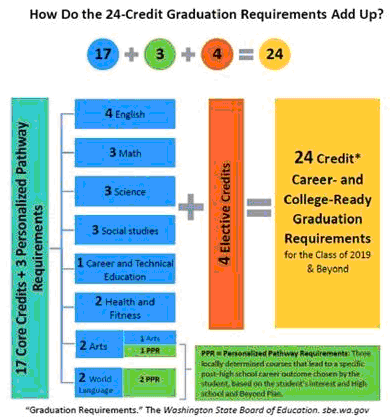

Language Acquisition is something that is studied worldwide and languages themselves are something that many people wish they could acquire in the blink of an eye. But we all know that without taking a class, the pathway to language learning is not always what we make it out to be. Below is my own multi-lingual journey and how I acquired several languages through both conventional and unconventional pathways to reach fluency.
Pathway 0 – Born into a Multi-lingual Family

As a dedicated polyglot and a world language teacher, my journey to learning world languages was never conventional, but I had the help of being bi-lingual from the time I was born. I call this Pathway 0, as not every person is so lucky to have two languages they simultaneously learn at home from birth. However, with how globally connected the world has become over the last century (thanks to faster travel means and the internet); this is something that is becoming less and less rare. In my case, my two languages were not the most common for the state of California: English and Turkish. Certainly these were two languages that have nothing in common: not the grammar, not the pronunciation…nothing. That in itself was my superpower that would, eventually, later propel me into becoming a proud quad-lingual world language teacher (soon-to-be quintilingual, just give me a few more years)!
Pathway 1 - Compulsory Credits: Taking a World Language at School

Next we have the most common and conventional pathway, Pathway 1 – Compulsory Credits. Like most students, I started to learn French in the 7th grade after a quick elective schedule change within the first weeks of school landed me in Madame Johnson’s French 1 classroom. There was no intrinsic motivation for me; rather, that it was a graduation requirement for high school which I could get a head start in during middle school. Now interestingly enough, this was the first time that I was consciously terrified of speaking in another language, even though I could speak in front of crowds of people in both English and Turkish without hesitation. For some reason, being put on the spot in front of my class when she used the dreaded “victim” cards (something I use in my own classroom now, hah!), I found that I was really applying myself to learn the language a little bit out of the fear of failing in front of others.
Nevertheless, I eventually found myself paying attention to patterns in the language. While studying, I noticed that there were similarities to French from both Turkish and even English. These similarities are what we grammar nerds would call “cognates”: words that appear similar or are pronounced similarly and/or have similar meanings. Through connecting my L1 (Language 1: English) and L2 (Language 2: Turkish) to my L3 (Language 3: French) I suddenly strengthened the connections to all the languages I knew. This gradually helped me get stronger and stronger at French, as I continued with it all the way until university.
My speaking in French didn’t reach what I consider “proper fluency” until after visiting France much later in life (after graduate school) where I had the opportunity to live there for 2.5 months. When I say “proper fluency”, I mean free-flowing speeches that aren’t memorized and simple to somewhat complex sentences, which are what most students tend to produce at level 2-3. But even before then, I had ample speaking practice in the classroom with full immersion starting in year 3 through year 6 (AP) in high school because it was a focus of my French teacher to keep us practicing every time we were in class without failure. My “fluency” journey in French started to solidify in year/French 3, or what was my freshman year of high school.
Pathway 2 – Intrinsic Motivation: Learning With Your Own Means and Self-Study

The next pathway is less common, but it is my favorite, Pathway 2 – Intrinsic Motivation. My love of languages was not accidental by any means, since I grew up bi-lingual, I already had an affinity to learning languages. Also while I was in middle school, I started to learn Japanese independently at home because I was interested in the culture and the language. Yet, because my school did not offer Japanese as a world language, I ended up in a French class.
Since Japanese was the first language I was intrinsically interested in from a very young age, you could say I had a different gusto or approach to learning it. I would get my hands on any form of the language (audio and video-wise) and surround myself with hours of endless input. For me this was mostly music and TV shows or movies. I refused to learn the written language until I had mastered the sounds. You could call it a backwards approach to learning a language; it was almost experimental in nature when I look back on it. It wasn’t until my sophomore year at university that I had the opportunity to take an actual class to learn the reading and writing with the 100-level series of the language.
At that time, while in middle school, I did not realize that by restricting my learning to only listening practice, that what I was actually doing is what linguists would call the “silent phase or receptive phase” of second language acquisition (in my case 4th language acquisition). This is a phase where one truly absorbs the language and there is limited production beyond repetition and pronunciation. This is also common for babies when they are limited in their own sound production, yet they absorb every sound we make around them or towards them in unprecedented ways. In other words, I did not have any speaking practice whatsoever; not with a teacher, a student, or a native.
Although, my reading and writing suffered a little bit down the line (kanji is particularly challenging!), I was able to pick up the hiragana and katana alphabets in no time due to hours of hearing those sounds within context of vocabulary over the years of my study. Furthermore, my pronunciation, my intonations/inflexions, and my mannerisms are all like that of a native due to the hours and hours of authentic input I was exposed to…or so my Japanese friends say when I visit them in Japan. Three separate visits later, I often and still do get mistaken as a “hafu”, or half-Japanese, due to my pronunciation alone.
Finally, my journey as a polyglot continued with Pathway 2. As of two years ago, I have been learning Korean the same way as I had approached Japanese many years ago. Since it was a method that worked for me before, I figured I would approach a language that is similar: the same way. Although my method is unconventional and completely ignores the writing, reading, and speaking, it is without a doubt that my fluency of the language has increased significantly these past two years. The next steps will be to take a class after a few more years of the “silent phase/receptive phase” to begin solidifying the gaps in my language acquisition a traditional class would have avoided.
However, we must also thank my superpower, Pathway 0, which has helped me immensely; as both Japanese and Korean are linguistically/grammatically similar to Turkish, and Japanese has some similarities with Korean as well. Due to this, I do not envision having much trouble picking up what I need to once the time comes. As you read this blog post, you might find that you have students like this in your own classrooms, which have that same intrinsic motivation to learn the language you are teaching (the same kind of motivation that I had for Japanese and now for Korean). You have one or more students in mind now don’t you?
Which Pathway(s) will you and/or your students choose to embark on learning a world language?

Regardless if you or your students were born into Pathway 0 or not, most of us will end up in Pathway 1 only to end up saying “Oh I took (insert world language) in high school for 2 years, but I can’t speak it!” As a world language teacher, I cannot tell you how much this irks me, but rather than go on into detail about why it irks me, let’s talk about a solution: more authentic, more frequent, more interesting, more relevant, and higher stake speaking practice for learners of a world language. With ever increasing classroom sizes, it becomes tricky to provide this kind of practice to students at the rigor and frequency that we want to within a year of a language course. This is where Extempore comes in to provide just that. Oh, did I mention it saves you and the students’ instructional time?
What does using Extempore look like?
As an example, for my students they have weekly speaking assignments in and outside of the classroom to assess their speaking ability. Beyond the traditional speaking assessments I already do in class, using a platform like Extempore really provides me with ways to reinforce concepts we learned in the classroom whether it be grammar-based or vocabulary-based.
For my beginners I will do lots of phonetics with the alphabet, accents, and pronunciation the first weeks of school. For my intermediate students there will be asynchronous activities that they must complete with a partner (at school with our laptops or within the comfort of being at home) to simulate a conversation. For my advanced students, responding to an essay prompt aloud, amongst other activities is common.
The opportunities and creative freedom Extempore provides you as the teacher with are simply endless. Intrigued? Try a free-trial and let us know what you notice in your classroom after starting to use Extempore! We love to hear from our teachers and students because your classes truly shape our improvements. Comment below, on our Facebook page, or tweet us on our Twitter with your experience!

This is post was created by Rümeysa Nurdoğan who is the French Teacher/Instructional Designer & Curriculum Specialist at Jane Addams Middle School in the Seattle Public School District. A proud Husky, she holds two BA's in French language and Literature as well as International Studies: European Studies, from the University of Washington, Seattle. She completed her Masters in Teaching for World Languages from the University of Washington, Seattle as well and was honored as the Guardian of the Gonfolon for 2019 Commencement's French Department Top Alumni. She is a proud polyglot that speaks English, Turkish, French, and Japanese. She is currently learning Korean.


